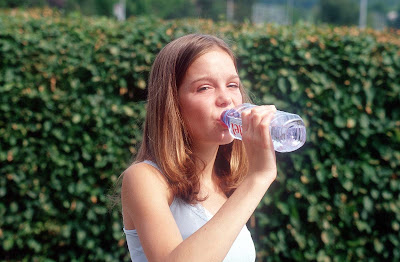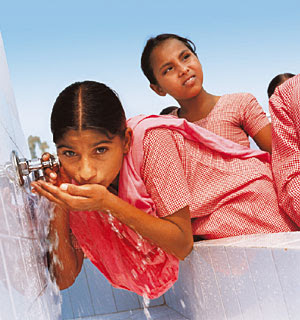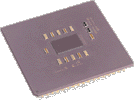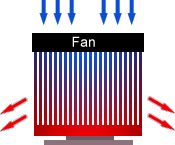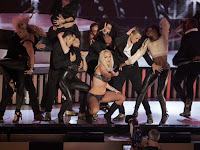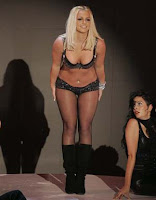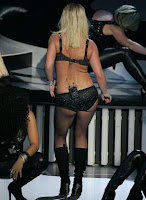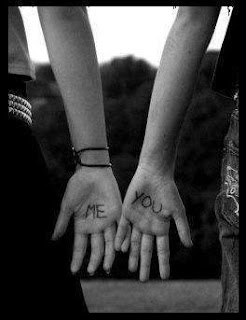What’s Your Best Hair Color?
From Skin Tone to Style, Find Your Perfect Match
You may spend hours coordinating your ensembles, from your earrings to your blouse to your toenail polish. But have you ever considered if your hair color matches your skin tone? Whether you dye your hair at home or have it colored in a swanky salon, it’s essential that you find the right shade to flatter your skin tone. The wrong hue can make your complexion look washed out, sallow, drab, or muddy. But if you choose a shade that enhances your skin tone and coloring, you can rejuvenate your complexion, brighten up your best features and give your skin a healthy glow. All you have to do to find your perfect hair color is pick up a mirror and examine your coloring. Plus, find out what your hair color says about you…
The main trick to finding the right hair color is to complement, not match, your skin’s undertones. Here’s a crash course on the three basic shades of undertones, along with recommended hair colors for each:
Pink/Blue Undertones
Hair shades: Intense browns, reds or blonds work well for the base color. Pick golden, ash or honey highlights for contrast.
Red Undertones
Hair shades: Above all, avoid bright red tones. Don’t over-process your hair or go too blond or too dark. Ask your hair colorist for a honey brown or a golden base color. Add caramel lowlights to give your hair a sun-kissed appearance and make your skin appear less red.
Yellow Undertones
Hair shades: Avoid a yellow or golden hair color, which will make your skin look sallow. Instead, use a deep, rich base color like intense dark chocolate, chestnut, mahogany, or auburn. Ask your stylist for highlights in shades of cinnamon, red, burgundy, or dark copper, which will help neutralize the yellow in your skin.
Determining your skin’s undertone will give you a basic guide for finding the right hair color for you. In addition, you should also know if you have a warm or cool complexion. To really examine your coloring, put on a white T-shirt and stand in natural light. A good rule of thumb is if your veins are blue, you’re most likely cool. If they’re more greenish, your skin tone is probably warm. Although it would make things easier if these categories were set in stone, many women don’t fall perfectly into one or the other. Women of mixed heritage, in particular, may find that they have both warm and cool tone qualities.
To really nail down your skin type, you also need to determine if your coloring is light, medium or deep. (Don’t underestimate the importance of great makeup. See related article: Put Your Best Face Forward)
Cool Skin Tones
Overview
Your skin tone: Pale with pink or no undertones; medium with pink or golden undertones; very dark brown; olive
Your eyes: Deep brown, black-brown, blue, hazel, green, or bluish gray
Your natural hair color is: Black, golden blonde or medium to dark brown
Best hair colors: Bluish-red shades like burgundy, ruby, cherry, or garnet
Light cool
Your skin tone: Rosy pink, pinkish-beige, pearl
Your eyes: Grayish blue, grayish green, bluish-green, or light blue
Best hair colors: Lighten up. Shades of white blond, platinum blond or light brown will best flatter your complexion. Add highlights that are even lighter than your base color.
Your celebrity profile: Actress Naomi Watts has glowing rosy skin and gray-blue eyes.
Medium to deep cool
Your skin tone: Light to dark olive or dark brown to ebony
Your eyes: Brown to black, deep blue, deep green, or greenish-blue
Best hair colors: Try deep colors like black or rich coffee brown. Jazz up your look with plum or burgundy highlights.
Your celebrity profile: Spanish actress Penelope Cruz has flawless olive skin and chocolate eyes.
Warm Skin Tones
Overview
Your skin tone: Pale with peach or gold undertones; brown with pink, copper or yellow undertones; dark brown to very dark brown
Your eyes: Golden brown, brown, green, blue, turquoise, or hazel
Your natural hair color is: Red, deep brown, golden blond, strawberry blond, reddish or golden brown
Best hair colors: Red hair color with a hint of cinnamon, ginger, russet, or strawberry
Light warm
Your skin tone: You have a classic ivory or “peaches and cream” complexion straight out of a romance novel.
Your eyes: Amber, green, brown, or hazel
Best hair colors: Try a warm, light hair shade. Strawberry blond, light brown with golden or red highlights or light golden blond will all look beautiful on you.
Your celebrity profile: Be proud of your ivory skin! You share it with actress Scarlett Johansson, who has beautiful porcelain skin and clear green eyes.
Medium to deep warm
Your skin tone: You have warm, yellow undertones and a sun-kissed golden brown or coppery complexion.
Your eyes: Chocolate, green, cinnamon, amber, or topaz
Best hair colors: Go deep! Think chocolate and espresso and try dark golden brown, chestnut, or copper for your base. If you want to add highlights, experiment with red or burgundy.
Your celebrity profile: Actress Jessica Alba has bronze, summery skin and coffee-colored eyes.
Once you find the right hair color, your complexion will glow and your skin will look healthier than ever before. You’ll be surprised how easily a flattering hair shade can brighten your features and give you a dose of instant glamour.
What Does Your Hair Color Say About You?
Hair color isn’t just about looking gorgeous. For many women, it’s a way to express themselves. We all know that a wool blazer says “responsible,” while a low-cut camisole screams “flirt with me.” But do you know what message your hair color is sending? Whether your locks are red, black, brown, or blond, “hair color is definitely a fashion statement,” says colorist Angela Berk of the Joseph Cozza salon at the Four Seasons Hotel in San Francisco.
Read on to find out what your hue says about you, plus get our foolproof color tips.
Red
The impression: Redheads are perceived as feisty, opinionated and seductive, much like Kate Winslet’s character in Titanic or Nicole Kidman in almost anything. “The word best associated with red is “hot”: hot-headed and hot-tempered, but also sexy,” says colorist Jon Patrick (JonPatrickColor.com), who has worked with Rebecca DeMornay and Elizabeth Banks. On the flip side, ladies in red can also be perceived as homely – with freckles, frizzy orange hair and pale lashes. “There’s the stereotype that redheads are either drop-dead gorgeous or unattractive,” Patrick says.
Must have: A good colorist. “The right red can really pretty up your skin,” Patrick promises. “But there’s a fine line between red and orange, and gold and brass.”
Another essential for this fiery hue is confidence. Only 2-5% of the population is born with red hair, and because of its rarity, “red is a great standout color,” says celebrity hair stylist David Ingham (UberStylist.com), who has worked with Christy Turlington and Cindy Crawford.
Play it up: Request a vibrant red shade, Berk suggests. “The prettiest bright red hair has highlights and lowlights,” she says. After adding these, she recommends a bright glaze. Don’t worry – your highlights and lowlights will still shine through. “If you put streaks on top of the glaze, they look faded,” she says.
Au naturel: Red is the hardest color for your hair to absorb, and can look washed out as it fades. Patrick weaves gold tones in with the red to hold the color in place. “This will afford a nice burnt undertone, even when the red fades,” he explains.
Our favorite redhead: Marcia Cross. “The red flatters her porcelain skin, giving her an otherworldly beauty,” Patrick says. “It sets her apart from the other Housewives.”
Black
The impression: “Exotic, sultry, tough, and mysterious,” Ingham says. Think Lucy Liu in Kill Bill.
Must-have: Great skin. Consider this analogy: When you go to a diamond shop, the jeweler places the diamond against a black cloth, which showcases the stone’s assets… and flaws. “If a woman dyes her hair black, it will show every imperfection on her face,” Patrick says.
Because dark black hair can look dull, a shine-booster is essential.
Play it up: “Try highlights in a strong contrast color, like red or blond,” Ingham suggests. Another way to grab attention? “Ask your stylist for a blue-black or violet-black shade,” Berk suggests.
Au naturel: For a softer look, “add medium brown color throughout your hair,” Berk says. Ingham recommends placing brown underneath the hair, rather than on the surface, à la Angie Harmon.
Our favorite black-haired celeb: Rose McGowan. “When a woman has dark hair and pale skin, the high contrast creates a Snow White effect,” Patrick says.
Brown
The impression: “Brunettes are perceived as responsible, as the good girl,” Patrick says. Think Anne Hathaway in The Devil Wears Prada.
Must-have: Different shades running through your locks. Brunettes can be ho-hum when their hair is monochromatic, Patrick says. “It’s not the brown color itself that’s boring, but the sameness of it.”
Play it up: “Sex up your hair with lowlights,” Patrick suggests. “They add a sexy quality and a whole new dimension of depth.”
To buck the boring stereotype, you can also try an extreme haircut, like long bangs or an edgy shag. If you’re scissor-shy, play around with styling tools like a curling iron or Velcro rollers to make your look more interesting.
Au naturel: “The more colors that are in your hair, the more natural it will look,” Berk says. “The trick is to make sure that these colors complement, not clash with, your hair.”
Inspired by all the celebrities who have traded in their platinum locks for darker hues, a lot of women are asking for brown, Ingham says.
Our favorite brunette: Jennifer Garner. With several shades of brown running through her strands, her hair takes on a rich, luxurious look.
Blond
The impression: “Blondes are often thought of as the sex bomb,” Ingham says. Think Jessica Simpson in The Dukes of Hazzard. Since this shade can be hard to maintain, golden gals can also be stereotyped as high-maintenance and vain. “Blondes are often not taken seriously in their profession,” Ingham says.
Luckily, the party-loving, flirty stereotype has advantages in the dating world. One of Ingham’s clients, for example, asked for blond hair after a break-up because she wanted a sexier look now that she was back on the market.
Must have: Confidence. “Wearing blond hair is like wearing high heels,” Patrick says. “It’s a statement and an attitude.” Since the human eye is drawn to lighter shades “you’ll certainly get more attention as a blonde,” he says. And do they really have more fun? According to Patrick, yes! Blondes have more opportunity to have fun because of the attention they get.
Play it up: Light shades like honey blond turn heads. Or go even lighter. “Platinum blond always stands out,” Berk says.
Au naturel: Add lowlights to tone down blond hair that’s gone too light, Berk suggests.
Our favorite blonde: Gwen Stefani. “Platinum blond is an extremely hard color to maintain, but her hair always looks beautiful and healthy,” Berk says.

